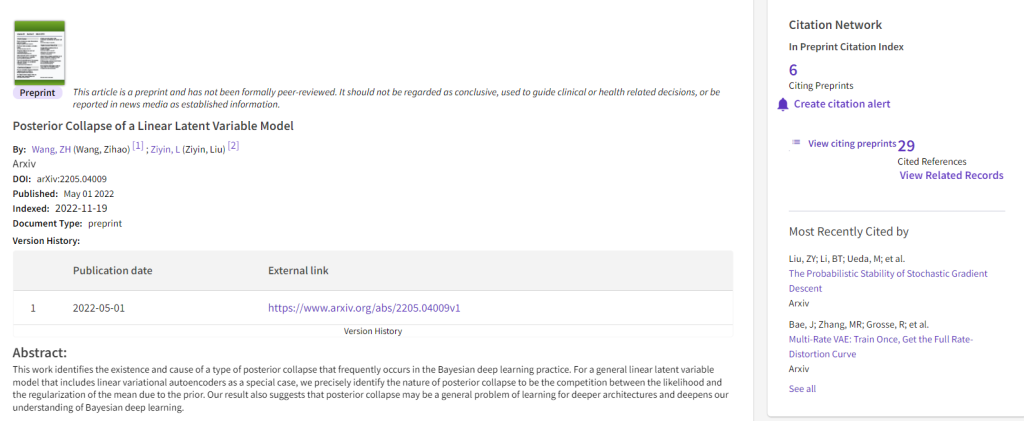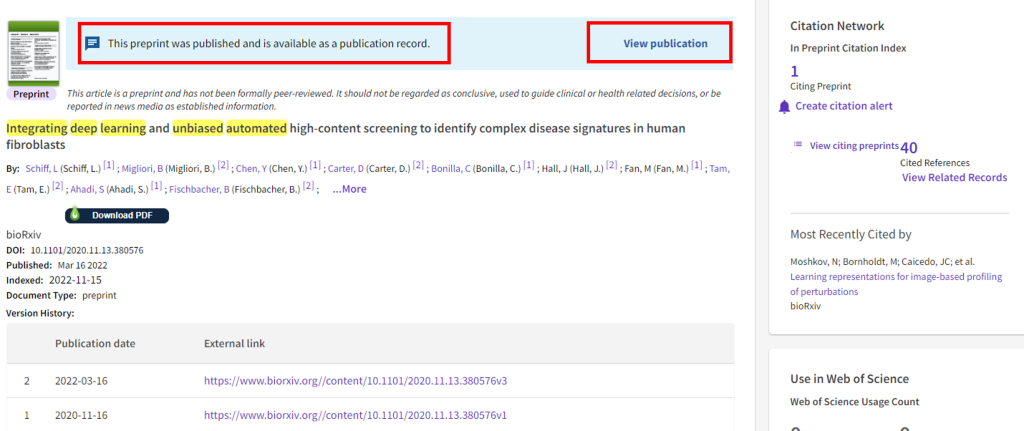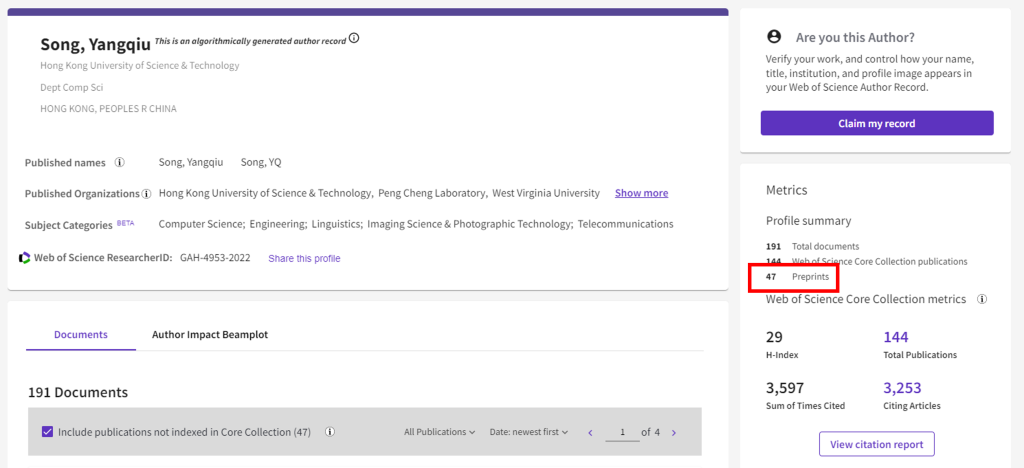We now have a subscription to Preprint Citation Index from Web of Science, a new database covering preprints from leading repositories including arXiv, bioRxiv, chemRxiv, medRxiv and Preprints.org.
Preprints offer a major advantage in terms of speed. Unlike traditional publishing which can take several months, preprints can typically be made freely available on a repository site within five days of being posted. While awaiting peer review, preprints enable researchers to quickly disseminate their findings and receive feedback from their peers, which can help improve the quality of their work during the review process. PCI is therefore a good resource for researchers to quickly locate the latest scientific breakthroughs in the form of preprints, and to trace the evolution of an idea from early findings to published research through a range of integrated services provided by Web of Science.
Coverage
At launch, the Preprint Citation Index provides access to nearly two million preprints from the following five repositories:
- arXiv: physics, mathematics, computer science, quantitative biology, quantitative finance, statistics, electrical engineering and systems science, and economics
- bioRxiv: biology
- medRxiv: medical, clinical, and related health sciences
- chemRxiv: chemistry and related fields
- preprints.org: multidisciplinary spanning science, social sciences, and arts & humanities

PCI allows users to search for preprints and capture early mentions of the research through citation indexing. In this example, this preprint has been cited by 6 preprints.
A number of large preprint servers, including OSF Preprints, Research Square, and SSRN, so far are not covered by Web of Science. But as announced, Web of Science plans to include a dozen more repositories in PCI through 2023.
Link Preprint to Web of Science Core Collection
The Preprint Citation Index is integrated with other Web of Science databases, such as the Science Citation Index and Social Science Citation Index, enabling researchers to examine the connections between preprints and corresponding published articles.
When a preprint is available as a Web of Science Core Collection published article, a notification may appear at the top of the full record indicating that the preprint has been published. Similarly, if a Web of Science Core Collection record detects the availability of a preprint version in PCI, a link to the preprint record will be displayed.
Below is one example showing the track. However, I find that the linkages between versions of a scholarly work are often times incomplete. It is also worth noting that preprint citations are standalone and are not included in Times Cited counts, the Journal Impact Factor (JIF), or any other citation metrics within the Web of Science Core Collection or Journal Citation Reports.

When a preprint has undergone formal peer review and been published in a journal indexed by the Web of Science Core Collection, a notice may be shown.
Link Preprint to Researcher Profiles
With the launch of PCI, preprint counts are now displayed in the publication tab of an author record. We will then be able to expand our views of a researcher’s expertise and place preprints in the context of a researcher’s career.

Researcher profile in Web of Science now includes counts of preprint.
– By Jennifer Gu, Library
Views: 617
Go Back to page Top
- Category:
- Research Tools
Tags: preprint citation index, preprints, web of science
published April 14, 2023
last modified April 17, 2023


